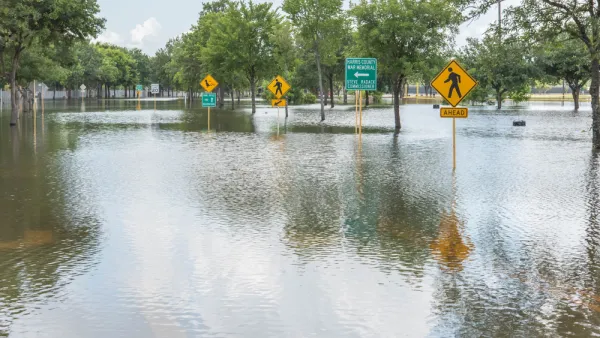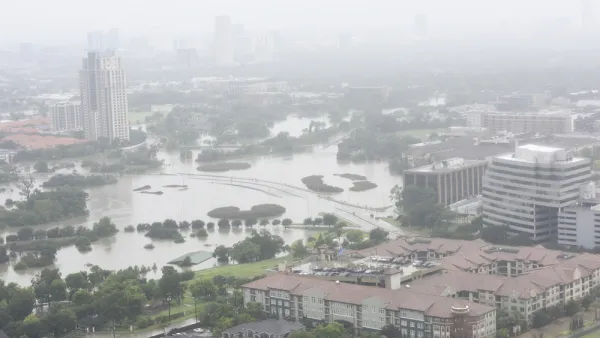History shows that there's more than one way to control flooding, but the best ideas are also urban amenities.

After Hurricane Harvey's destruction, but before money for rebuilding pours in, Jose Solis takes a page in the Houston Chronicle to consider how two cities responded to major floods in the fairly distant past.
"The histories of San Antonio and Los Angeles," Solis writes, "provide strong arguments for why design should play an essential role in developing new infrastructure and a cautionary tale for what happens when it is ignored."
Both Los Angeles and San Antonio experienced major flooding in the 1920s and '30s that brought a great deal of federal funding for major infrastructure to prevent future losses. Los Angeles, using a strategy typical of both the urbanism of the era and of the city itself, buried the Los Angeles River, replacing it with an effective but joyless concrete channel; San Antonio built Riverwalk, which works as a flood control device but also as an amenity for residents and a huge tourist draw.
History has been much kinder to Riverwalk, and Los Angeles is preparing to spend a great deal of money to remake the LA River into something more like it. (Houston's neighbor, New Orleans, also embraced the idea of amenity-as-flood-control after its own catastrophes.)
Solis praises New York City's post-Sandy Rebuild by Design competition as something that "evolved into a broader initiative for rebuilding cities to be more resilient" and suggests that Houston initiate something similar.
"Rebuild by Design," Solis continues, "provides a blueprint for how Houston can attract leading thinkers to develop solutions that will not only protect us during future floods, but let people enjoy living here for all the times between."
FULL STORY: As Houston rebuilds, we need amenities, not eyesores

National Parks Layoffs Will Cause Communities to Lose Billions
Thousands of essential park workers were laid off this week, just before the busy spring break season.

Retro-silient?: America’s First “Eco-burb,” The Woodlands Turns 50
A master-planned community north of Houston offers lessons on green infrastructure and resilient design, but falls short of its founder’s lofty affordability and walkability goals.

Delivering for America Plan Will Downgrade Mail Service in at Least 49.5 Percent of Zip Codes
Republican and Democrat lawmakers criticize the plan for its disproportionate negative impact on rural communities.

Test News Post 1
This is a summary

Test News Headline 46
Test for the image on the front page.

Balancing Bombs and Butterflies: How the National Guard Protects a Rare Species
The National Guard at Fort Indiantown Gap uses GIS technology and land management strategies to balance military training with conservation efforts, ensuring the survival of the rare eastern regal fritillary butterfly.
Urban Design for Planners 1: Software Tools
This six-course series explores essential urban design concepts using open source software and equips planners with the tools they need to participate fully in the urban design process.
Planning for Universal Design
Learn the tools for implementing Universal Design in planning regulations.
EMC Planning Group, Inc.
Planetizen
Planetizen
Mpact (formerly Rail~Volution)
Great Falls Development Authority, Inc.
HUDs Office of Policy Development and Research
NYU Wagner Graduate School of Public Service




























